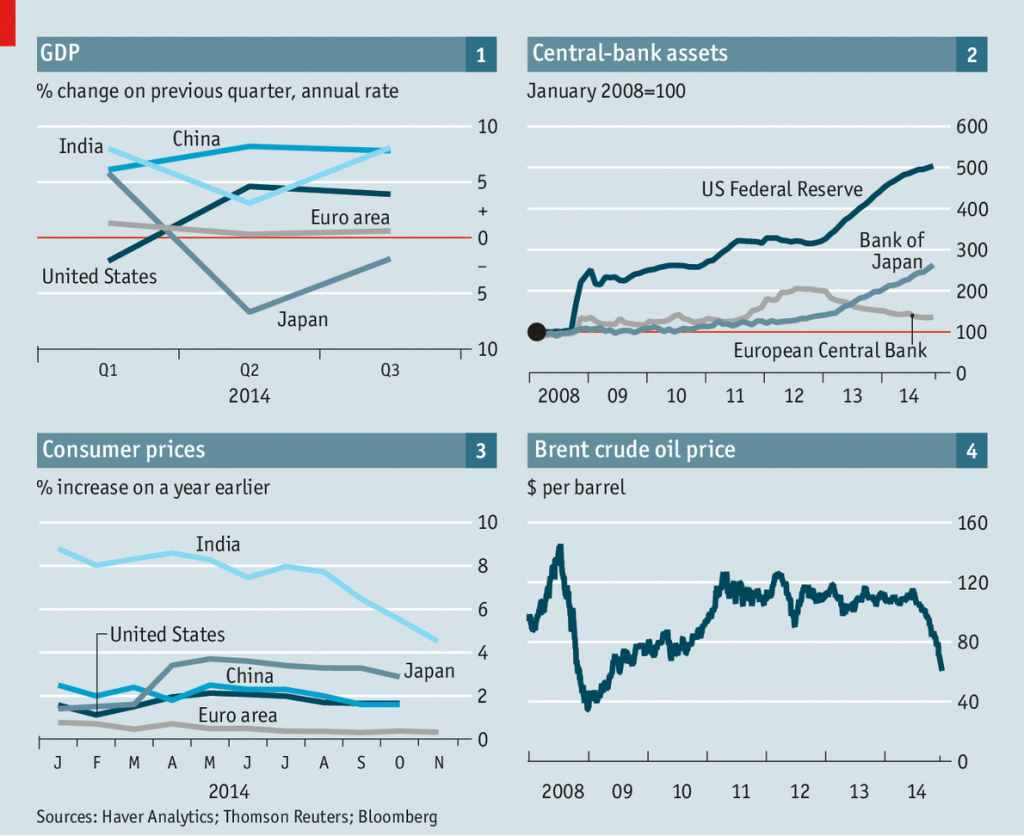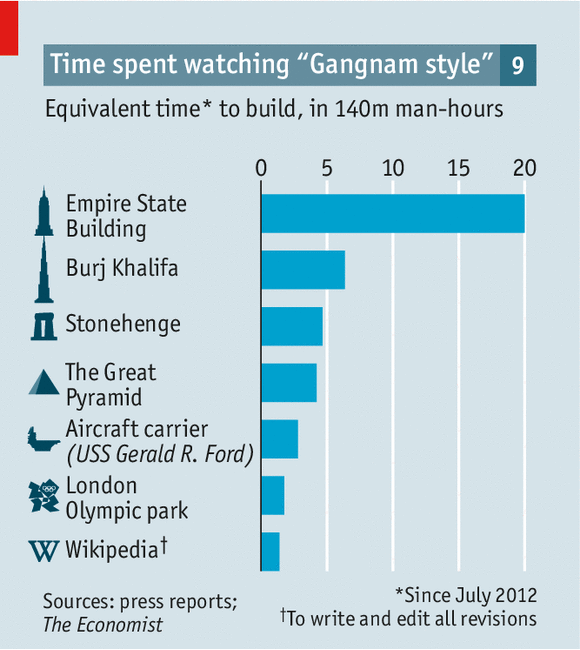Opis wykresów cz.2
Idąc za ciosem, publikuję jeszcze jeden wpis o trendach (pierwszy wpis tu). Tym razem jest to krótki tekst z The Economist, w którym znalazły się bardzo ciekawe wyrazy związane ze wzrostem lub spadkiem.
Źródło: http://www.economist.com/news/finance-and-economics/21636763-world-economy-began-bifurcate-year-diverging-markets –> może wam się nie otworzyć bo the Economist ma ograniczony ilościowo dostęp do swoich artykułów.
tytuł: Diverging markets: The world economy began to bifurcate this year
diverging –> rozbieżne
bifurcate–> rozdwajać, rozgałęziać się
data publikacji: Dec 20th 2014
Growth accelerated (przyśpieszył) in America, after a slow start to the year, and in India, after decisive elections. But China plateaued (ustabilizować się), Europe languished (marnieć, słabnąć, opadać) and Japan swooned (słabnąć / a dosłownie omdlewać) (chart 1).
In response the Federal Reserve called off “quantitative easing”, but the Bank of Japan expanded it. The European Central Bank sat on its hands (siedzieć z założonymi rękami) (chart 2).
Despite central banks’ efforts, inflation fell everywhere, to worryingly low levels in the euro zone in particular. A rise in Japan’s sales tax flattered (być korzystnym) its numbers (chart 3).
One reason for falling inflation was the plunging (spadające) oil price. Thanks both to limp demand (kulejący/ słaby popyt) and buoyant supply (spora podaż) , it fell by about half (chart 4).
Faster growth and cheaper oil helped propel (napędzać, wprawiać w ruch) America’s stockmarket to several new records during the year. Share prices have been rising faster than profits (chart 5).
Oil exporters suffered particularly severe falls (znaczące spadki) in their currencies (as did Ukraine, after Russia’s invasion). Confidence in most emerging markets slipped (pogorszyła się) (chart 6).
Although growth remained subdued (stłumiony) by Chinese standards and property prices began to fall, China’s stockmarket surged (gwałtownie wzrastać) (chart 7).
India’s stockmarket rose sharply thanks to Narendra Modi’s election win and to the shrinking current-account deficit, a product of the falling oil price (chart 8).
The most popular chart on The Economist’s site looked at what could have been achieved in the time the world spent watching a South Korean pop video (chart 9). 😉













